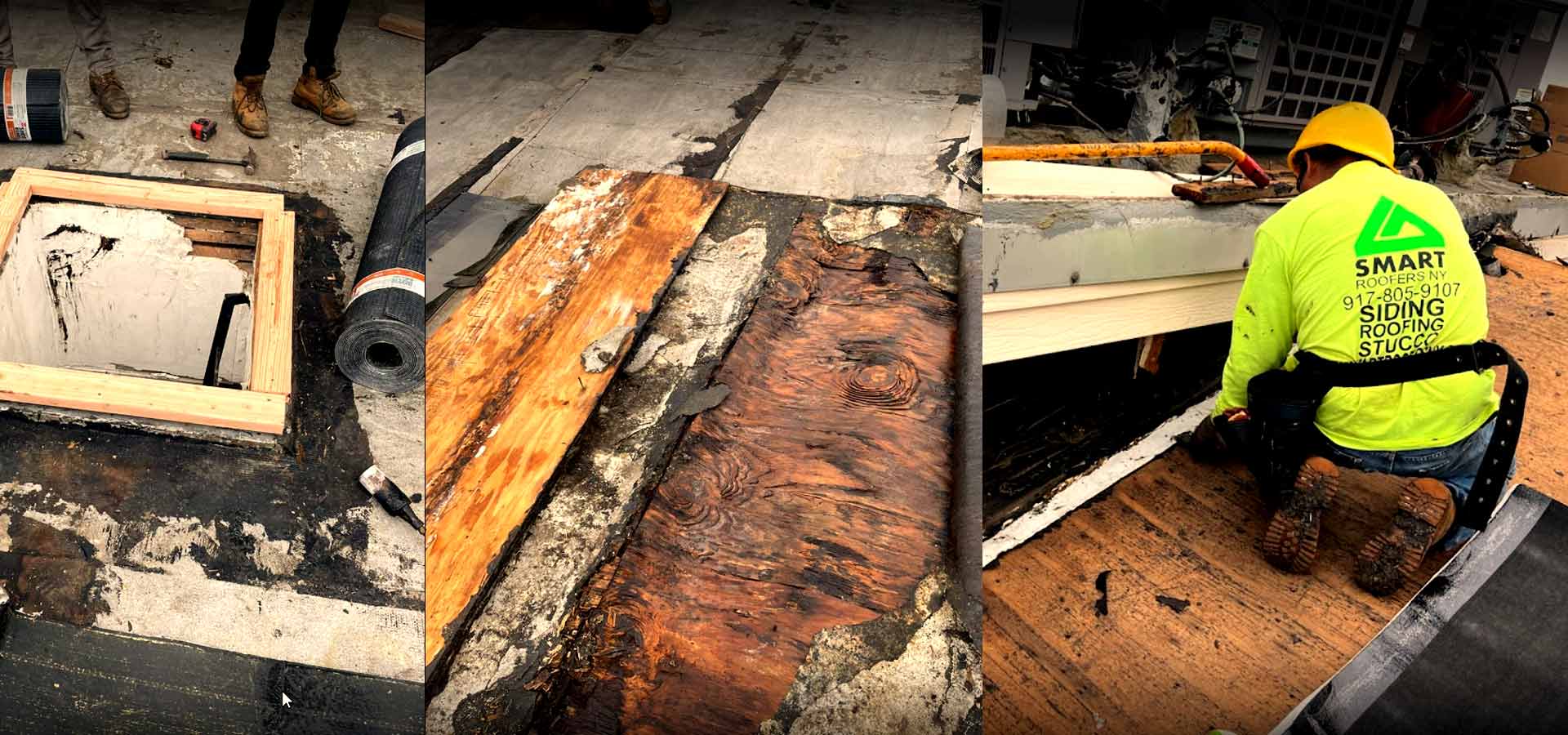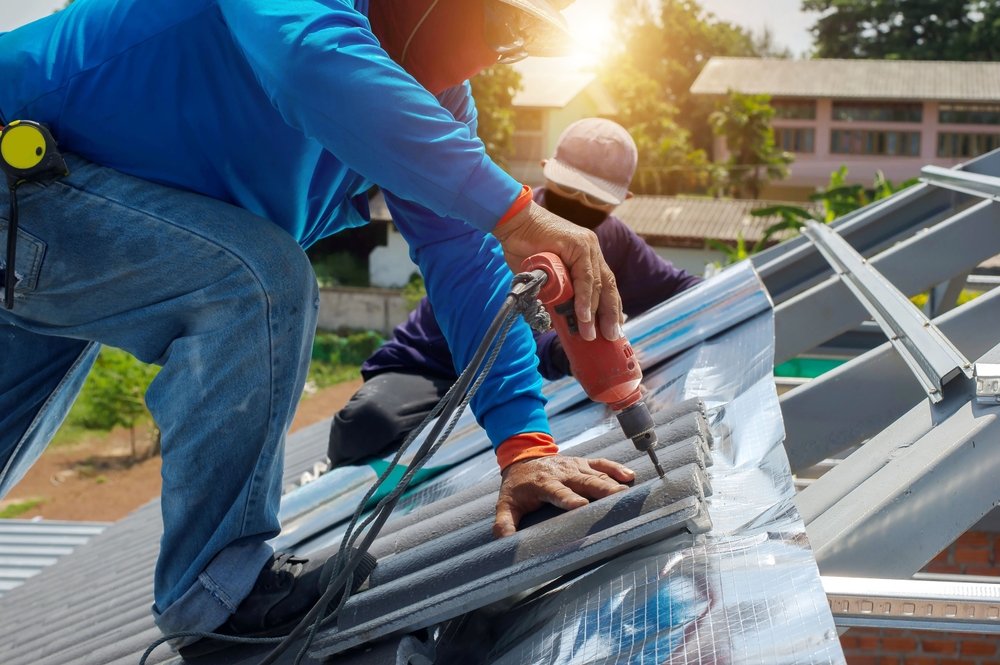Oahu Roofing: Dependable Roofing Solutions for Houses and Services
Oahu Roofing: Dependable Roofing Solutions for Houses and Services
Blog Article
Comprehending the Different Types of Roofings: A Comprehensive Guide for Homeowners
With an array of choices-- varying from the standard gable to the contemporary flat-- each type offers one-of-a-kind advantages and challenges that should straighten with the property owner's environmental considerations and certain demands. As we discover the ins and outs of numerous roof covering types, it comes to be apparent that one size does not fit all; the appropriate choice may stun you.
Saddleback Roof
Gable roofings, defined by their triangular form, are amongst one of the most prominent roofing designs due to their simpleness and efficiency in losing water and snow. This style features two sloping sides that meet at a ridge, permitting for effective drainage and decreasing the risk of water build-up. The steep pitch typically related to saddleback roofs boosts their capability to handle heavy rainfall, making them suitable for different climates.
In enhancement to their sensible benefits, saddleback roofs use visual convenience. They can be adjusted to numerous building styles, from conventional to modern-day homes. The layout can likewise fit additional features such as dormer home windows, which boost natural light and ventilation in the attic room space.
Additionally, saddleback roofs provide enough space for insulation, adding to energy performance. Property owners can pick from a variety of roof covering materials, consisting of asphalt tiles, steel, and ceramic tiles, additionally boosting personalization choices.
Regardless of their advantages, saddleback roofs might need extra assistance in areas prone to high winds or heavy snowfall. On the whole, the gable roofing system stays a preferred selection as a result of its blend of performance, longevity, and aesthetic charm.
Apartment Roofs
Flat roofings are typically recognized for their minimal layout and sensible applications, especially in commercial and business settings (oahu roofing). These roofings include a nearly horizontal or horizontal surface area, which allows for very easy building and flexible space application. While they might lack the visual allure of angled roofs, level roof coverings supply many advantages, particularly in urban atmospheres where optimizing space is vital
One of the key benefits of flat roofing systems is their access. Property owners can utilize the roofing system space for different functions, such as rooftop gardens, balconies, or photovoltaic panel setups. Additionally, flat roof coverings are usually extra economical to install and maintain contrasted to their sloped equivalents, as they require less products and labor.
Usual products utilized for level roofings consist of built-up roof covering (BUR), changed bitumen, and single-ply membranes, each offering distinct advantages. Generally, flat roofing systems serve as a functional and versatile choice for many home owners and organizations alike.
Hip Roof Coverings
Hip roofs are characterized by their sloped sides that assemble on top, developing a ridge. This design is distinct from saddleback roofs, as all four sides of a hip roofing system incline downwards toward the wall surfaces, providing a more steady structure. The angle of the slopes can differ, enabling for versatility in building aesthetics and capability.
One of the primary benefits of hip roofing systems is their ability to endure heavy winds and damaging weather. The sloped surface areas enable much better water drainage, minimizing the threat of leakages and water damages. In addition, hip roofings offer boosted attic room space, which can be utilized for storage or perhaps transformed address into comfortable areas.
However, constructing a hip roofing system can be more costly and complex than simpler roof kinds, such as saddleback roofs. The extra product and labor entailed in creating the slopes and guaranteeing appropriate architectural integrity can cause higher expenses. Despite these drawbacks, many home owners prefer hip roof coverings for their longevity, aesthetic allure, and potential for power effectiveness.
Mansard Roofs
Mansard roofs, frequently identified by their distinct four-sided layout, attribute two inclines on each side, with the reduced incline being steeper than the upper. This building style, originating from France in the 17th century, is not only visually appealing but useful, as it makes best use of the useful area in the upper floors of a structure. The high reduced incline permits more headroom, making it an excellent choice for lofts or attic rooms, which can be transformed into living spaces.
Mansard roofs are defined by their versatility, fitting different architectural styles, from typical to contemporary. They can be useful site constructed with various products, including asphalt roof shingles, slate, or steel, giving property owners with a variety of options to match their spending plans and choices. In addition, the layout enables for the combination of dormer windows, improving natural light and air flow in the top degrees.
Nonetheless, it is necessary to consider the potential drawbacks. Mansard roofs might require even more upkeep because of the complexity of their style, and their steep slopes can be testing for snow and rainfall overflow. Generally, mansard roofing systems integrate beauty with practicality, making them a popular selection amongst home owners looking for unique architectural attributes.
Dropped Roofing Systems
As property owners increasingly look for simplicity and functionality in their building designs, lost roof coverings have actually become a prominent option. Characterized by a solitary sloping airplane, a shed roof offers a minimalist aesthetic that enhances different home designs, from contemporary to rustic.
Among the primary benefits of a shed roof covering is its straightforward construction, which commonly translates to reduce labor and product prices. This style permits reliable water drainage, lowering the risk of leaks and water damages. Additionally, the vertical slope gives ample space for skylights, improving all-natural light within the inside.
Shed roofing systems additionally provide convenience in terms of usage. They can be successfully incorporated right into enhancements, garages, or outdoor structures like sheds and pavilions. Moreover, this roof design can accommodate various roof products, consisting of metal, asphalt shingles, or also environment-friendly roofs, aligning with green initiatives.
Nevertheless, it is important to take into consideration regional environment problems, as heavy snow tons may require changes to the roof covering's angle or structure. Overall, shed roofs offer a functional and cosmetically pleasing alternative for home owners aiming to make the most of functionality without compromising design.
Final Thought


Gable roof coverings, characterized by their triangular form, are among the most prominent roof covering styles due to their simplicity and efficiency in losing water and snow. oahu roofing. The steep pitch frequently linked with gable roofing systems improves their capacity to manage heavy precipitation, making them appropriate for different environments
While they might do not have the aesthetic appeal of pitched roofing systems, level roofing systems use various benefits, especially in metropolitan atmospheres where optimizing space is vital.

Report this page